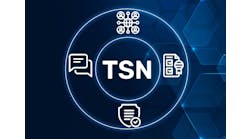Ethernet touches far beyond industry, and the world is celebrating its 50th anniversary this year.
As the underlying networking technology that supports the Internet, Ethernet touches so many aspects of our personal and professional lives every day, it’s hard to imagine life now without that connection.
In a sense, the world runs on Ethernet, more than coffee, and its networking capabilities not only bring the world closer but also provide a scalable foundation that is adaptable and flexible. This flexibility is what has helped Ethernet thrive and acclimate to so many applications for so long.
Many have celebrated with the Ethernet Alliance, a global, non-profit industry consortium dedicated to the continued success and advancement of Ethernet technologies. Ethernet Alliance was a key sponsor for the Computer History Museum Ethernet@50 anniversary in-person and virtual event on May 22.
The Ethernet Alliance is preserving the oral history of the Ethernet with the Voices of Ethernet series, which talks with the real people behind Ethernet’s story, including Bob Metcalfe, who is often referred to as the Father of Ethernet. Metcalfe joined the Xerox Palo Alto Research Center (PARC) in 1972, where he worked in the computer science laboratory. There, in collaboration with David Boggs, he invented and developed the Ethernet local-area network (LAN) and its system of packet protocols, which serve as the underlying layer of the Internet.
The Ethernet Alliance is also the marketing organization for Institute of Electrical and Electronics Engineers (IEEE) standards, to support an expanding Ethernet ecosystem for industry and its development through standards for existing and emerging markets.
As the industry voice of Ethernet, the organization bridges the gap between technology standards and end users, and it fosters industry collaboration and interoperability. The Ethernet Alliance organizes interoperability demonstrations at conferences and educational webinars and certification programs.
In 2015, the Ethernet Alliance also created the first Ethernet Roadmap as a way to engage attendees at its events. Essentially an analog depiction of the digital frontier, the map shares where Ethernet has been and where it is headed. “Suffice to note, the roadmap was exceptionally well-received and has evolved over the years into one of the top resources of the Alliance,” says Orshi Abraham, Ethernet Alliance marketing chair and product marketing manager at Spirent Communications. Now the roadmap includes regularly updated information about emerging applications and the latest in speeds, feeds and interconnects. “It is regularly reviewed to ensure the content is fresh, relevant and represents the rapid growth of Ethernet specifications and applications,” Abraham says.
The two-sided anniversary edition for 2023 provides an illustrated map that details the speeds and application spaces on one side and visualizes the Ethernet ecosystem and related technologies on the other side. It also explains Ethernet nomenclature and technical references to understand how Ethernet is achieving 500 Gb, 800Gb and beyond.
When technology called for more
Since its beginnings, the Ethernet has remained flexible and adaptable enough to continue to expand as higher speeds and advanced technologies called for more. According to Dell’Oro Group’s Data Center and Campus Ethernet Switch Market Research, 9 billion Ethernet switch ports have shipped during the past two decades. It estimates the total market value at more than $450 billion.
Interoperability remains a key factor to the success of Ethernet, as it reduces deployment and support costs and increases user confidence and satisfaction, according to David J. Rodgers, Ethernet Alliance events and conferences chair and business development manager at Exfo. “The test-and-measurement sector is often leading the evolution of new standards and technologies,” Rodgers says. “Test-and-measurement is the bellwether of technology. Test vendors offer tools to help validate the latest technologies, so the industry can continue to design, develop and deploy new networking products.” This becomes even more important with the diverse deployment of Ethernet variants, speeds and interconnect strategies, Rodgers adds.
“A primary mission of the Ethernet Alliance is the promotion of technology testing, mainly focused on interoperability. No one vendor or customer has the vast breadth of products to engage in its own validation and interoperability testing. The Ethernet Alliance hosts both public demonstrations to showcase and provide engineering working sessions to validate multi-vendor interoperability. If we look at the Ethernet Alliance’s mission, I believe facilitating interoperability is some of the most important work we do,” Rodgers says.
Interoperability is also a key to the successful commercialization of Ethernet, says Peter Jones, Ethernet Alliance chair and engineer at the Cisco Networking hardware team. Other contributors to Ethernet’s success include an open, competitive market, driving vendors to continuously innovate technology, and “Ethernet never tried for perfection, but aimed to solve real-world problems with deployable technology. This ‘good enough’ approach provided a lot of flexibility,” Jones says.
Over the years, this foundation of flexibility allowed Ethernet to advance and evolve as its was needed. For industry, advances like power over Ethernet (PoE), single-pair Ethernet (SPE) and time-sensitive networking (TSN) hold the future.
“Power over Ethernet introduces the ability to supply power over the same cable used for Ethernet. Now that power and Ethernet data co-exist, there is an ever-growing number of creative new Ethernet applications,” says David Tremblay, Ethernet Alliance Power over Ethernet chair and system architect at Hewlett Packard Enterprise’s Aruba networking division. Internet-protocol (IP) telephones, security cameras and Wi-Fi access points are common PoE applications. Newer PoE applications include light-emitting-diode (LED) lighting and sensors.
From the machines on the floor, where Ethernet carries the data to operate and analyze machine performance, industry has pushed that data to the cloud for easier access and larger storage capacity. And now, with edge technology, the network returns back to the machines where analytics can act upon the data more quickly.
Bring environments together
“Single-pair Ethernet brings the final frontier of Ethernet networking, the network edge, into view,” says Bob Voss, Ethernet Alliance Single-Pair Ethernet subcommittee chair and engineer at Panduit Corporate Research and Development. “We’ve successfully deployed Ethernet from the cloud through upper layers of enterprise networks over the years. Once the edge is reached, we needed translation gateways and other means to convert those communications to Ethernet protocol. With SPE, we can deploy a seamless, single protocol network, from cloud to edge.”
Single-pair Ethernet can also provide power like its four-pair cousin, improving control power infrastructure, Voss says. “Single-pair Ethernet brings a vital capability to enterprise networks that allows all data to be transparent, readily accessible and with the full IP security suite,” he adds. “The bottom line is better decisions are made faster.”
As more industrial applications seek real-time deterministic control, TSN will change that world. “Time-sensitive networking enhances Ethernet by introducing features and mechanisms that enable precise time synchronization, bounded low-latency and deterministic communication with extremely low packet loss,” says Razvan Petre, Ethernet Alliance principal member and product manager for Spirent Communications’ TSN portfolio.
Time-sensitive networking prioritizes critical traffic within the existing Ethernet infrastructure. “These advancements make Ethernet suitable for real-time applications, allowing the convergence of standard and time-critical Ethernet networks. Time-sensitive networking allows Ethernet to enter or expand its presence in domains where real-time, deterministic communication is critical, such as industrial automation, automotive in-vehicle systems, professional audio/video, aerospace or telecommunication, just to name a few,” Petre says.





